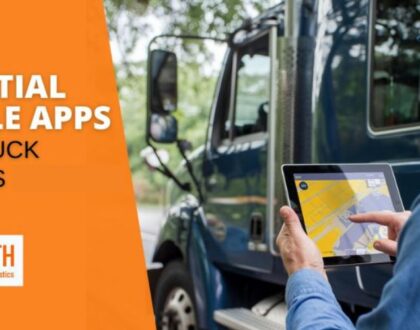How Long Does It Take to Get a CDL

What is a CDL?
A commercial driver’s license (CDL) is a specialized license that permits individuals to
operate large commercial vehicles, including trucks, buses, and tractor-trailers. This license is
legally required for anyone driving commercially and transporting goods or passengers
across state lines. CDL holders are held to higher safety and compliance standards, and their
licenses may be subject to additional regulations and restrictions.
Factors that Affect How Long it Takes to Get a CDL
Getting a CDL can take between three weeks and six months. The duration for completion
depends on a variety of factors, which include:
Student Ability:
A student’s driving skills can impact how quickly they pass their driving exam, potentially preventing the need to retake it.
Driving Hours:
Some programs require more driving hours with a licensed CDL driver to help individuals become more confident and experienced behind the wheel.
Endorsements:
There are six different endorsements available, which may add extra time to your training due to testing requirements.
Full-Time vs. Part-Time Programs:
Attending a CDL program full-time allows students to earn their CDL faster compared
Manual vs. Automatic Trucks:
The type of truck you choose to operate can influence how quickly you learn the necessary driving skills.
Military Experience:
Individuals with military experience may be eligible to waive the skills test, which can expedite the CDL process.
Testing Schedule and Availability:
The scheduling of a CDL test can also prolong the process if local testing locations are fully booked.
Classroom Time:
Each program offers a varying amount of classroom instruction, typically lasting between 30 and 80 hours, to teach essential knowledge.
What CDL endorsements can you get?
Adding endorsements to your CDL (Commercial Driver’s License) can enhance your qualifications and open up more job opportunities. Each endorsement requires additional testing and may extend the time it takes to obtain your CDL. Here are the six endorsements you can add to your CDL:
Hazardous Materials Endorsement:
Allows drivers to handle and transport dangerous substances such as flammable liquids, gases, and explosives.
Tank Vehicle Endorsement:
Permits drivers to operate vehicles designed to carry liquid or gaseous materials in a tank.
Passenger Transport Endorsement:
Enables drivers to carry passengers in commercial vehicles.
School Bus/Passenger Transport Combination Endorsement:
Authorizes drivers to transport passengers, including school children, and requires a background and criminal history check.
Double/Triple Trailers Endorsement:
Allows drivers to tow two or three trailers simultaneously.
Tanker and Hazardous Materials Combination Endorsement:
Combines the qualifications of both the Tanker and Hazardous Materials endorsements, allowing drivers to transport hazardous substances in tank vehicles.
Also Read: Beginner’s Guide to Become a Truck Driver: 6 Steps You Should Know
The type of endorsement(s) you choose will depend on your career goals and the specific
types of commercial driving you are interested in. Endorsements can be added at any time
during your career, providing flexibility as your career evolves. Each endorsement will
require you to pass additional tests and pay associated fees.
Obtaining a commercial driver’s license is a significant goal that requires a combination of
knowledge, training, and practical driving experience. While the process can be complex and
time-consuming, finding the right truck driving classes that align with your objectives and
availability may be a challenging and lengthy process.
If you’re based in Houston and seeking truck driving classes, you can get in touch with Zenith
Logistics Institute to find out the start date for the upcoming program cycle and obtain
additional information about their full-time and part-time options.
FAQ:
1. What’s the fastest you can get a CDL?
Obtaining a CDL can take as little as three weeks or six months.
2. What is the shortest CDL program?
The Class B CDL course takes just three weeks to complete, allowing you to operate tow
trucks, dump trucks, and delivery trucks.
3. What class of CDL is best?
Class A is the most popular CDL, as it leads to the highest-paying jobs in the industry.
4. What is the easiest CDL to get?
A Class B CDL usually takes less time to obtain and is often more affordable if you pay for
truck driving school.
Recommended Posts

Class A Vs. Class B CDL- Which is Better?
March 27, 2025

Essential Mobile Apps for Truck Drivers in 2025
February 25, 2025

Six Safety Tips For Truck Drivers
November 29, 2024

